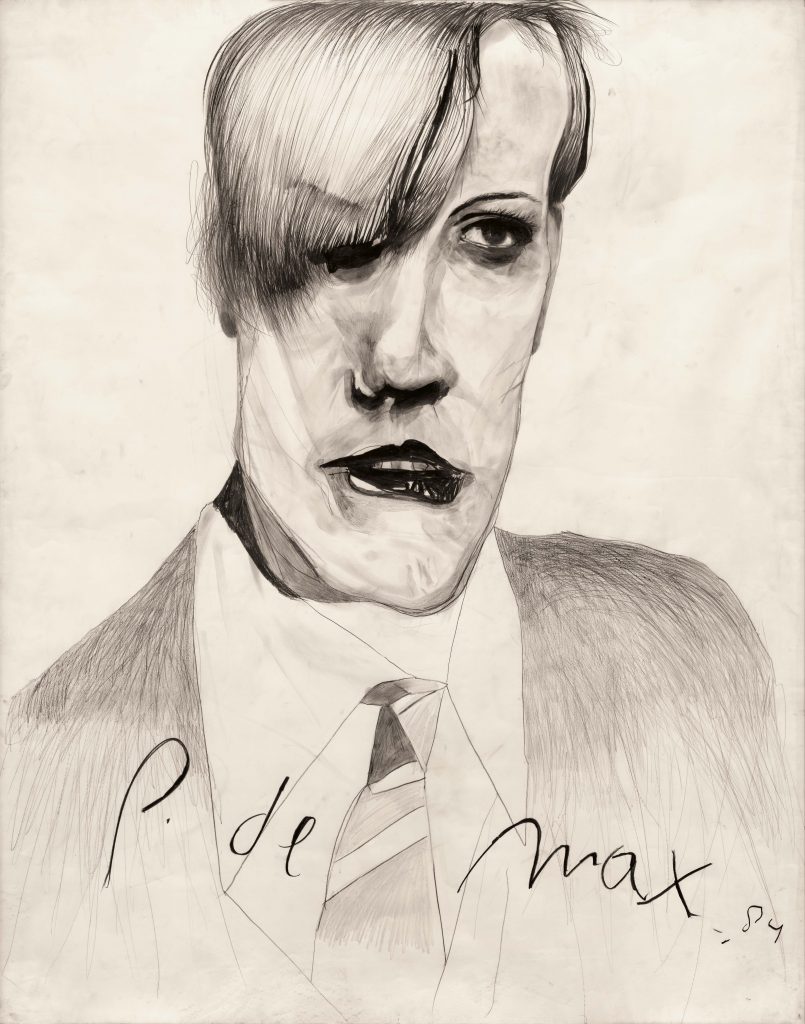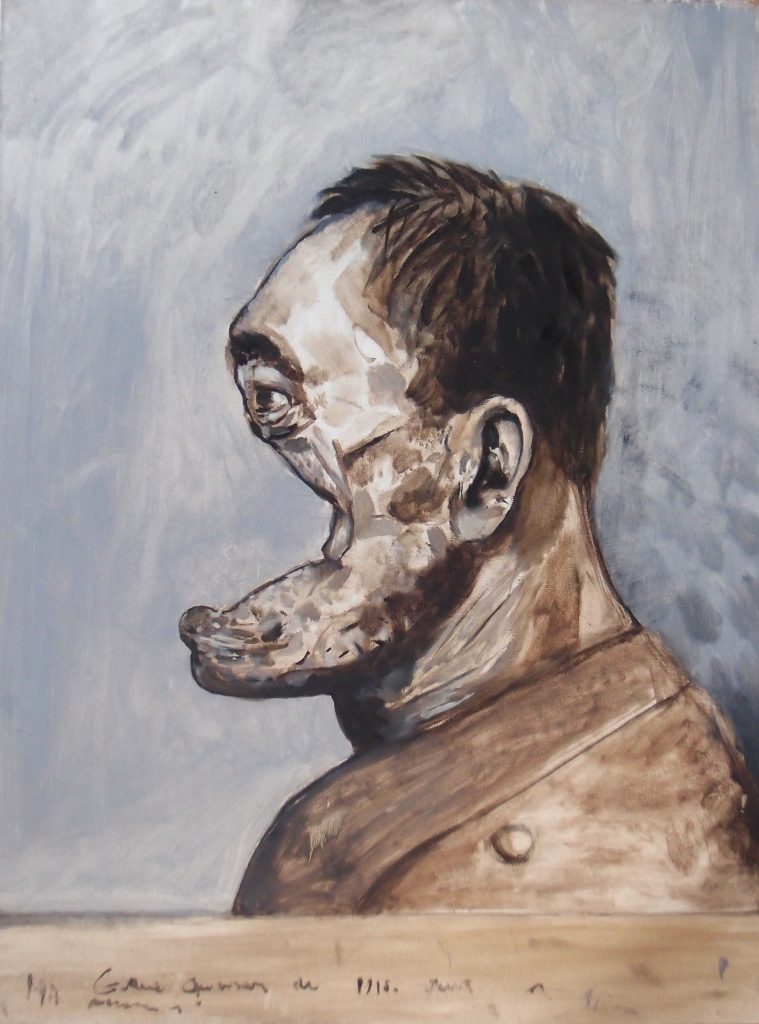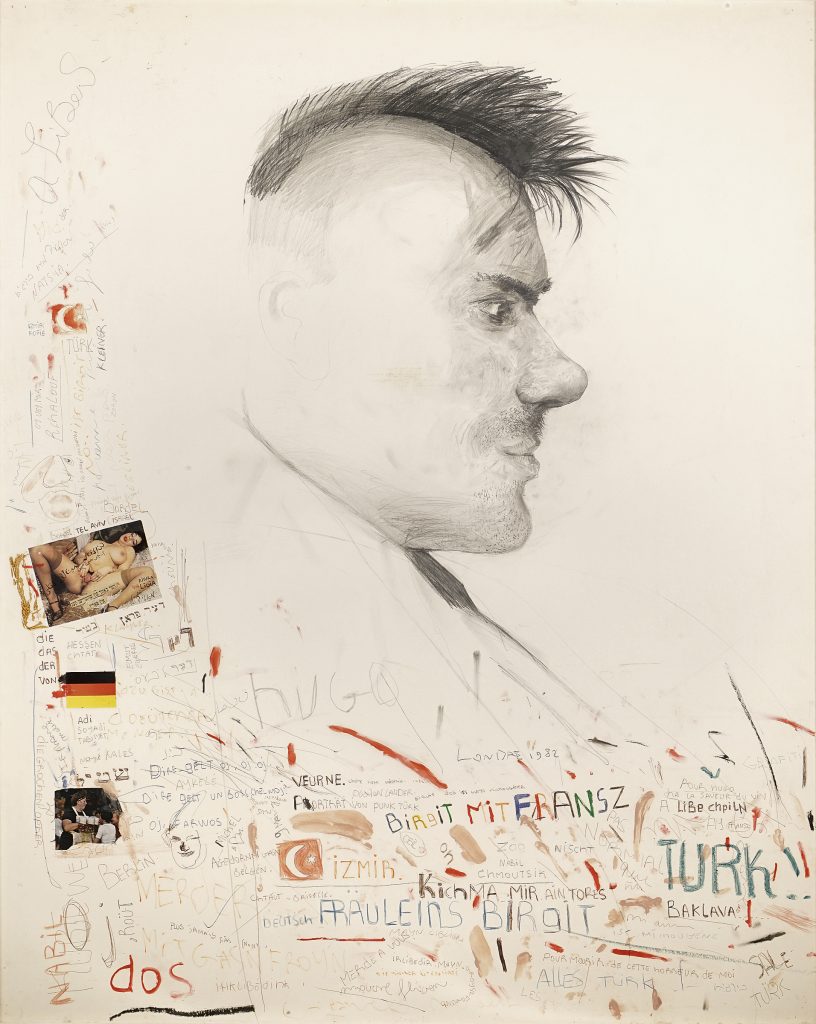Rough End
In his daily drawings, there were also lists of robberies. He dedicated one of his exhibitions to a trafficker-pimp. The entrance to another one imitated a front of a brothel. With Stéphane Mandelbaum, the limit between reality and mythomania is difficult to define.
He married Claudia, a young Congolese immigrant. He adopted her daughter and taught her Yiddish by drawing. In 1986, he traveled to the Congo, to his wife’s native village. There, he started trafficking in African art.
On his return, he participated in at least two robberies: a theft of African statuettes and another one of a Modigliani painting, La dame au camé. Following this robbery, the requestor refused to pay, claiming that it was a fake. Then Mandelbaum’s father received a telex from Cyprus saying that his son was imprisoned and tortured in Beirut. The reality was different, and even worse. His body was found along a river in the south of Belgium. The autopsy revealed a violent death: a blow to the skull, the body pierced by two bullets, and the face disfigured with acid.
Like all the rare exhibitions devoted to Stéphane Mandelbaum, this one at the MMK resounds like a tribute. The exhaustiveness of the works presented, the sobriety of the staging, the absence of text, all immerse us in the world of the missing Belgian artist. Between immature violence, provocation, and aesthetic vulgarity, this exhibition confirms the power of attraction of Stéphane Mandelbaum.
The exhibition Stéphane Mandelbaum is open until October 30, 2022 at the Museum für Moderne Kunst in Frankfurt.
See more information on the website.
























